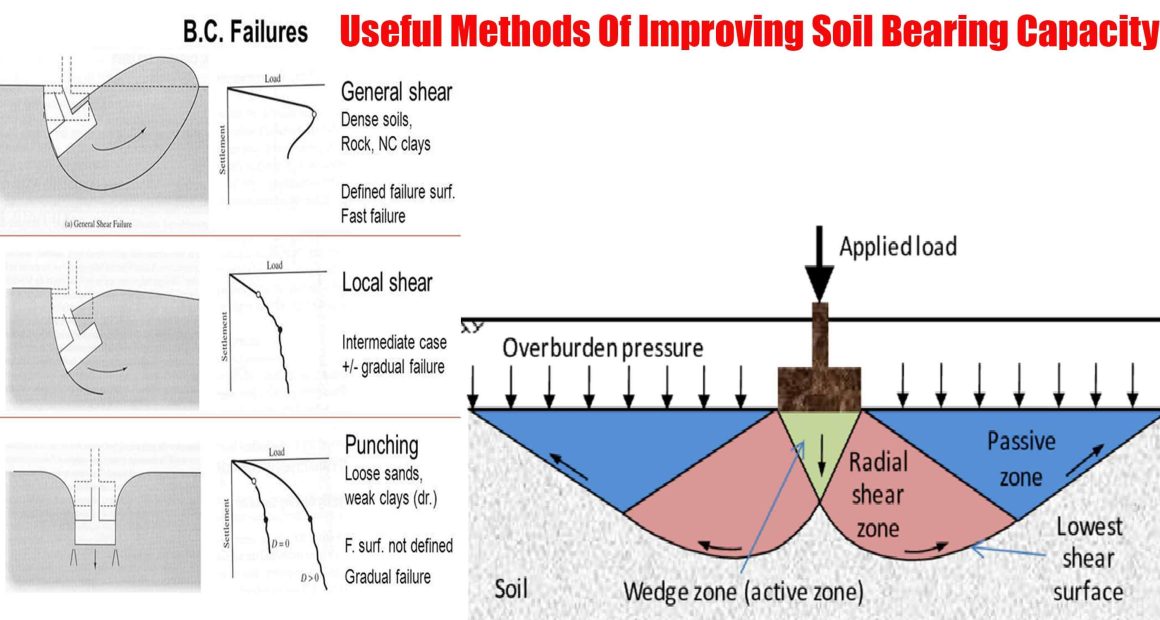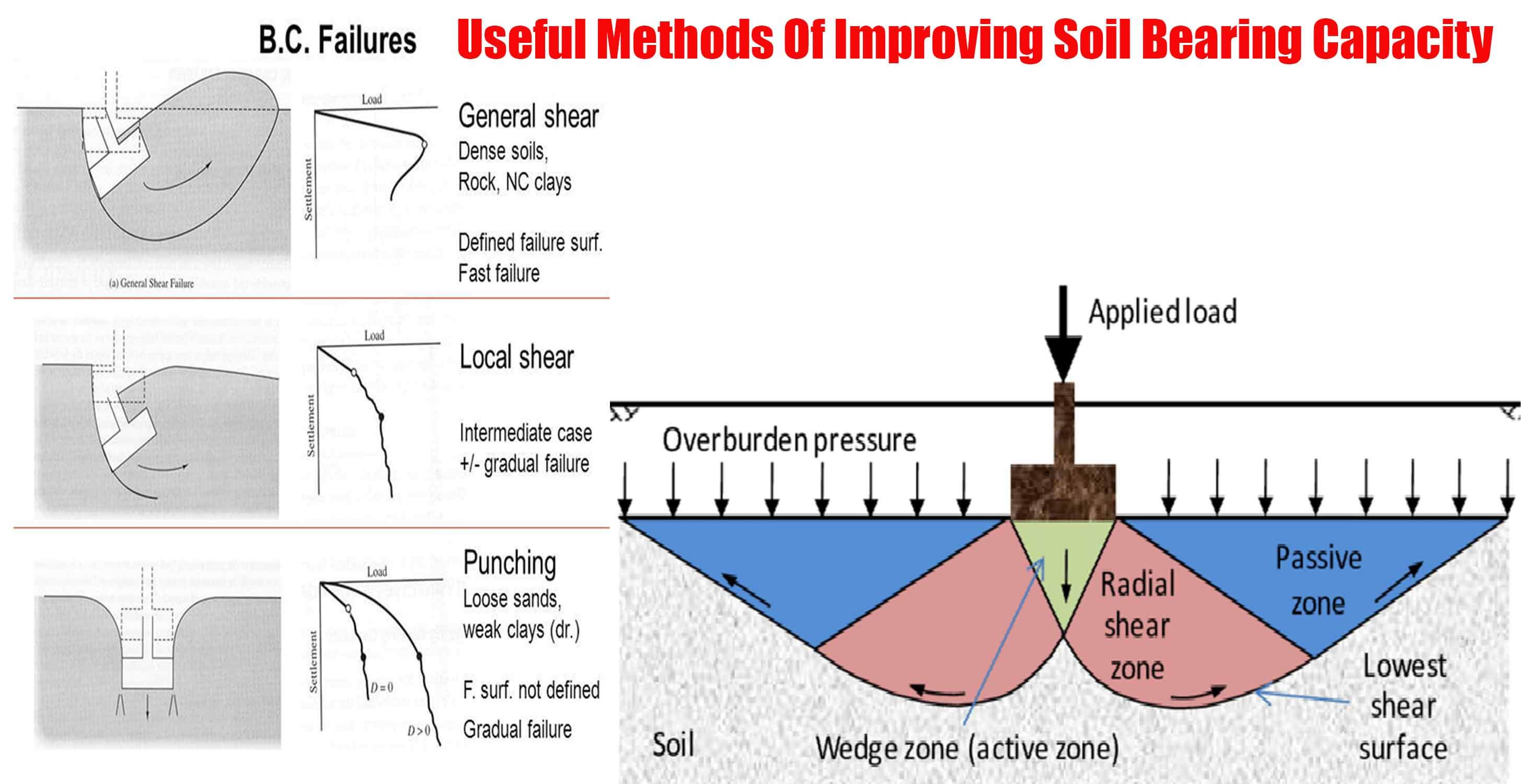What is Soil Bearing Capacity?
The capacity of soil to support the loads applied to the ground. The bearing capacity of the soil is the maximum average contact pressure between the foundation and the soil which should not produce shear failure in the soil
The stability of foundation depends on
1- The bearing capacity of soil
2. The settlement of soil beneath the foundation. Soil behaves in a complex manner when loaded, so it is important to know about it’s bearing capacity.
Improving Soil Bearing Capacity
Sometimes, the safe bearing pressure of soil is so low that the dimensions of the footings work out to be very large and uneconomical. In such a case, it becomes essential to improve the safe bearing pressure, which can be done by the following methods
1- Increasing the depth of the foundation
2- Compacting the soil
3- Draining the soil
4- Confining the soil
5- Grouting
6- Chemical treatment
1- Increasing the depth of the foundation
At deeper depths, the overburden pressure on soil is higher; hence the soil is more compacted at a deeper depth. As a result, it shows a higher bearing capacity. This is applicable only for cohesionless soils. This method is not applicable if the subsoil material grows wetter as depth increase. This method has limited use because, with an increase in depth, the weight and cost of the foundation also increases.
2- Compacting the soil
If we compact soil using an appropriate method, then there will be an increase in its density and shear strength. As a result of the bearing capacity of soil also increases.
Few methods of compacting soil of them are mentioned below
Compaction by surcharge load
The ground can be surcharged with heavy loads from aggregates or other materials to speed up the settlement and improve the bearing capacity of soil
Using sandpiles
This method is very useful in sandy soil or soft soils. Hollow pipes are driven in the ground, at close interval. This results in the compaction of soil enclosed between the adjacent pipes. These pipes are then gradually removed, filling and ramming sand in the hole, resulting in the formation of sand piles.
Vibration
Heavy vibratory rollers and compactors may compact a layer of granular soils to a depth of 1 to 3 m. Using an appropriate roller as per the soil type to move at a specified speed.
Vibro-flotation
It is a combination of vibration and jetting. A heavy cylinder, known as Vibro-flotation is inserted in the ground (soil) while the cylinder vibrates, a water jet on the tip of the Vibro-flotation supplies a large amount of water under pressure. As the Vibro-flotation sinks, the clean sand is added into a crater that develops on the surface.
3- Draining the soil
It is a well-known fact that the presence of water decreases the bearing power of the soil, especially when it is saturated. Reason for it is low shearing strength of soil in the presence of excess water
Drainage of the soil results in
1- A decrease in the voids ratio
2- Improvement of bearing capacity of soil
4- Confining the soil
Sometimes the safe bearing pressure of the soil is low because of settlements resulting due to the lateral movement of loose granular soil. Such a tendency of lateral movement can be checked by confining the soil, outside the perimeter of the foundation area, by driving sheet piles, thus forming an enclosure and confining the soil.
5- Grouting
This method is useful in loose gravels and fissured rocky strata. Bores holes in sufficient numbers are driven in the ground and cement grout is forced through these under pressure. The cracks, voids and fissures of the strata are thus filled with the grout, resulting in the increase in the bearing value.
6- Chemical treatment
This method of improving the bearing capacity of the soil is costly and applied in exceptional cases. In this method, chemical solutions, like silicates of soda and calcium chloride is injected with pressure into the soil. This chemical along with the soil particles form a gel-like structure and develop a compact mass. This is called chemical stabilization of soil and used to give additional strength to soft soils at deeper depths.






